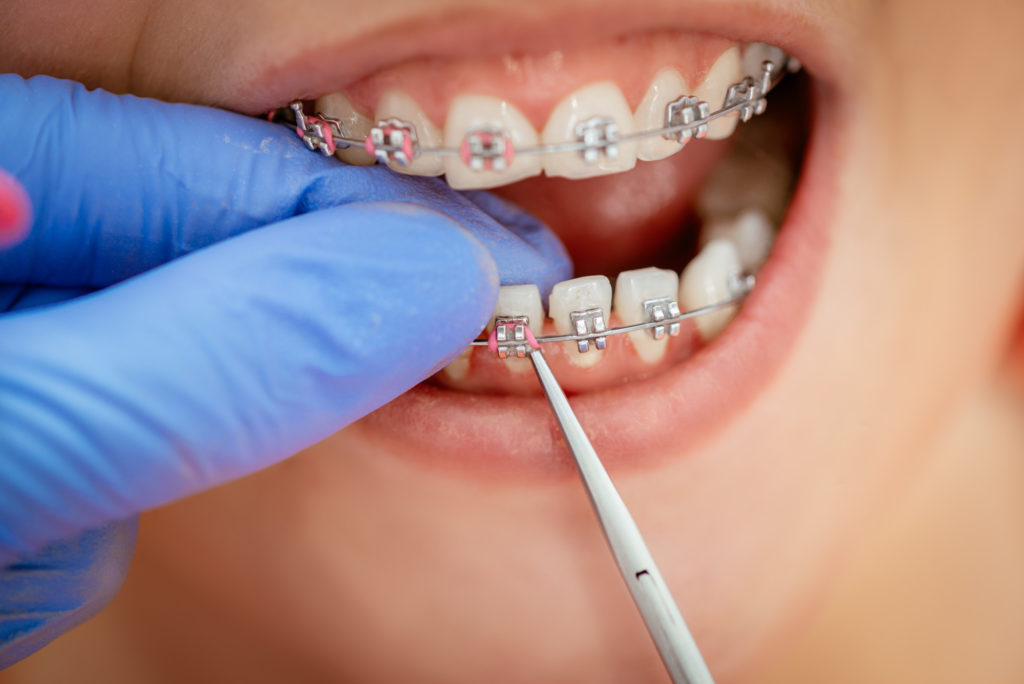
Have you been plagued by crooked teeth? The good news is that today, we have more options than ever before for straightening them. The bad news? All of the choices can sometimes be confusing and make it difficult to determine which treatment is right for you!
As you begin the process, you will probably have many questions. These might include “What is the difference between Invisalign and braces?” and “How long will I have to wear braces?”
Naturally, the orthodontic treatment that you opt for will depend on many factors. Your age, your budget, the current placement of your teeth, and your personal preferences all play a role in this decision.
It’s crucial to consult with an orthodontist, as well. Find out what they recommend based on their experience and a preliminary exam.
Let’s take a look at the treatment options.
Traditional Metal Braces
These are the most common and familiar type of braces, and they’ve been around for a long time. There is evidence that ancient Romans, including Cleopatra, wore dental appliances designed to straighten their teeth!
Traditional metal braces consist of brackets that are bonded directly to the teeth and wires that connect them. Together, they exert a gentle but continuous pressure on the teeth and jaw to move them into the desired position.
These braces are usually made from stainless steel. Titanium braces are becoming more common.
Some patients opt for gold-plated stainless steel, mostly for aesthetic reasons. The brackets themselves can also be made of vibrant colors, to jazz up an orthodontic patient’s smile.
A patient who opts for traditional metal braces must have them tightened or adjusted regularly, usually about every 3-4 weeks. The process takes, on average, about two years. The average cost for metal braces is between $3,000 and $7,500.
Lingual Braces
Another treatment option for people with malocclusions (that’s a fancy way to say crooked teeth) is lingual braces. These are actually placed on the inside of the teeth. They are not visible when the patient opens her mouth or smiles.
Because they are more difficult to affix to the patient’s teeth, lingual braces take more time in the orthodontist’s chair. They also tend to be pricier than traditional metal braces on the outside of the teeth. Having lingual braces fitted will set you back between $5,000 and $13,000.
Lingual braces take a bit longer than their counterparts. And it’s common for patients with lingual braces to have a lisp, especially when the braces are new. That’s because the tongue can no longer make direct contact with the back of the teeth — an important aspect of speech.
Over time, most patients adjust to the braces’ presence and learn to speak without lisping.
Clear Aligner Trays
A relatively new entrant into the field of orthodontic treatment, clear aligner trays are very popular. The first and most well-known brand of these trays is Invisalign. Invented in the late 1990s by an adult undergoing orthodontic treatment, Invisalign trays are very different than traditional metal braces.
Rather than having equipment permanently bonded to your teeth, Invisalign consists of very thin, transparent, plastic trays that snap onto the teeth. They are removed during meals and dental hygiene but should be worn for the remainder of the day and night.
Patients around the world have embraced clear aligner trays because they are nearly invisible. No one has to know you’re having work done on your teeth!
These trays will generally be replaced every two weeks. You will return to your orthodontist’s office for a checkup and progress report. At this time you will exchange your old Invisalign trays for a new set. There may be some slight discomfort during the first few days of wearing new trays, but it will pass.
What’s the Difference Between Invisalign and Braces?
Both methods achieve the same results, but that’s about where the similarities stop!
Invisalign trays make it much easier to clean your teeth since the trays are removed for cleaning. You just brush and floss like normal. With metal braces, it can be difficult to thoroughly and adequately brush the teeth.
Special tools are sometimes necessary to floss, as well.
There are no restrictions on the foods that can be eaten when you choose clear aligner trays. They should be removed whenever you eat or drink. That means you won’t have to forgo steak, corn on the cob, apples, raw carrots, caramels, popcorn, gum, or crunching ice for the next two years!
Invisalign is such an effective method of moving teeth that in most cases treatment takes only a year or 18 months. The duration depends in part on the patient and how many hours per day they wear the trays.
These trays can be removed for special occasions like a wedding or a big party, a sports match, or a photoshoot. But the better a patient is about wearing them 22 or 23 hours out of every 24, the more effective treatment will be.
With all of these advantages over the traditional braces, Invisalign treatment is probably expensive, right? Many prospective orthodontic patients are surprised to learn that Invisalign costs roughly the same as traditional metal braces!
Expect to shell out $3,500-$8,500 for this method of straightening your teeth. While there may be a slightly higher price to pay, patients around the globe agree that it’s worth it.
Are You a Good Candidate for Invisalign?
As you can see, there are advantages and disadvantages to every type of orthodontic treatment. Doing your research and asking questions of your dentist is a good place to start as you embark on this exciting dental journey.
Now that you understand the difference between Invisalign and braces, you are likely wondering if you are a good candidate for clear aligner trays like Invisalign. In order to answer that question, you will have to come in for a complimentary consultation with our experienced orthodontic providers. Give us a call to arrange an appointment. We look forward to seeing you!
